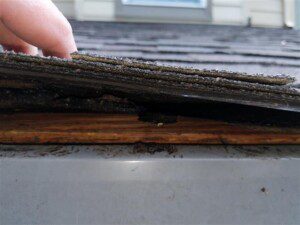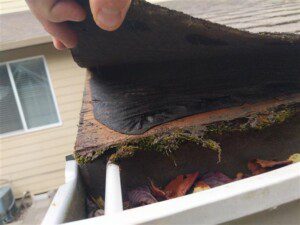
This metal flashing is installed by the roofing contractor before they install the roof covering material. Aluminum, copper, and galvanized steel are a few examples of non-corroding, non-porous metals that are used to create metal drip edges. Alternatively, some flashing is made of resilient plastic, vinyl, and fiberglass.
The small, integrated lip that is present on many roof gutters is inadequate to provide the protection that the edge of the roof requires. Modern building standards, roof shingle manufacturer guidelines and modern building codes in most jurisdictions typically call for the drip edge flashing to extend up the roof deck a minimum of 2 inches. The lip of the typical gutter extends up the roof deck less than one inch. The lip on the gutter is simply not long enough to provide adequate protection at the edge of the roof and dedicated flashing needs to be installed.

When adding drip edge flashing, the soffit and fascia should be inspected to ensure that they are in good shape. The installation of a drip edge will only conceal any rotten wood that is present on your fascia or soffit – you should fix the damage before installing the flashing.
Shingles should not have an excessive overlap of the flashing. No more than ¾ inches of the shingle should extend past the flashing. This helps keep the shingles from blowing off the roof during strong wind events.
You can find more information about this topic in the following video:
